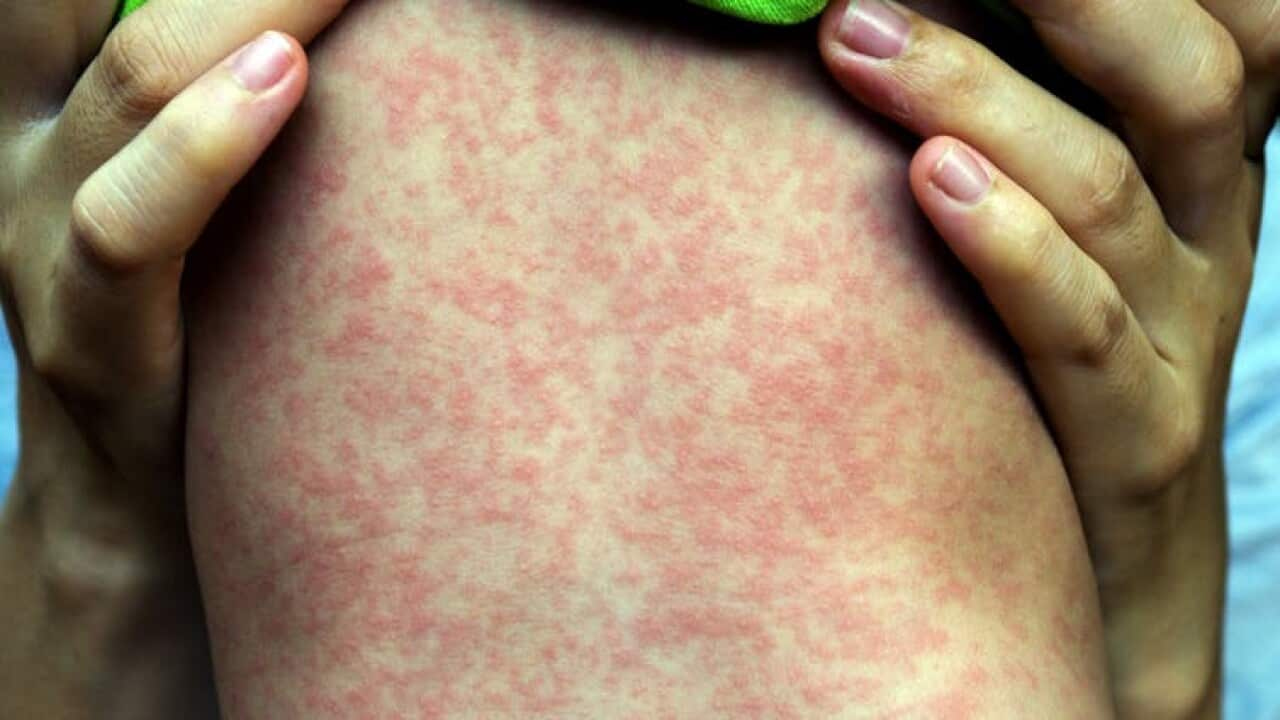Key Points
- NSW Health has issued a measles warning following the presence of the highly infectious disease in Western Sydney.
- Residents are urged to be on the look-out for symptoms until 16 April.
- The World Health Organization has warned preventative measures are necessary to stop outbreaks worldwide.
Sydneysiders are being warned to stay on high alert for measles after the highly contagious disease was detected in the Western suburbs.
A woman contracted the disease from a child and visited several locations while infectious.
NSW public health advice released on Easter Sunday warned residents to look for symptoms if they visited any of the four exposure sites from 24 March to 29 March.
These locations are Blacktown Kmart, Blacktown Baby Bunting, Winston Hills Mall, and Westmead Hospital emergency department.
Here's what you need to know about measles and how to protect yourself.
What is measles?
Measles is a highly contagious disease spread by a virus that often travels between hosts when they cough or sneeze.
Its airborne nature helps it spread quickly, one person with the disease can spread it to as many as 20 others.
It remains a common cause of death for children under five but can affect anyone.
Dr Conrad Moreira, acting director of the Public Health Unit at Western Sydney Local Health District, said to be on the lookout for symptoms until 16 April.
"Symptoms include fever, sore eyes, runny nose and a cough followed three or four days later by a red, blotchy rash that spreads from the head to the rest of the body," she said.
The maculopapular rash is not itchy and is unusual as it is both raised and flat.
It is a severe disease, with one-third of people experiencing complications or requiring hospitalisation.
Meanwhile, one in every 1,000 people with measles will develop encephalitis or swelling of the brain as a result, according to NSW Health.
Where are measles cases rising?
In February, the World Health Organization (WHO) voiced concern about the rapid spread of measles worldwide.
In 2022 the number of measles cases jumped 79 per cent, with 306,000 reported according to the WHO.
Measles outbreaks occurred in 37 countries in 2022, a rise from 22 the previous year.
The rise in measles has been attributed to a reduction in vaccination rates among children, partially due to lapses in medical visits during the pandemic.
WHO has warned that unless preventative measures are taken, at least half the countries worldwide are believed to be at high risk of measles outbreaks by the end of the year.
How can you protect yourself from measles
Staying on top of vaccination rates is the best way to keep outbreaks at bay.
Children are eligible for their first free dose of the vaccine at 12 months.
However, children six months or older can be vaccinated if they are traveling to a country where measles is endemic, with Europe now added to that list.
You need two doses for full protection, with the vaccine also covering children against chickenpox and mumps.
Measles requires at least 95 per cent vaccination rates to prevent outbreaks, with WHO reporting global rates have dropped to 83 per cent.











